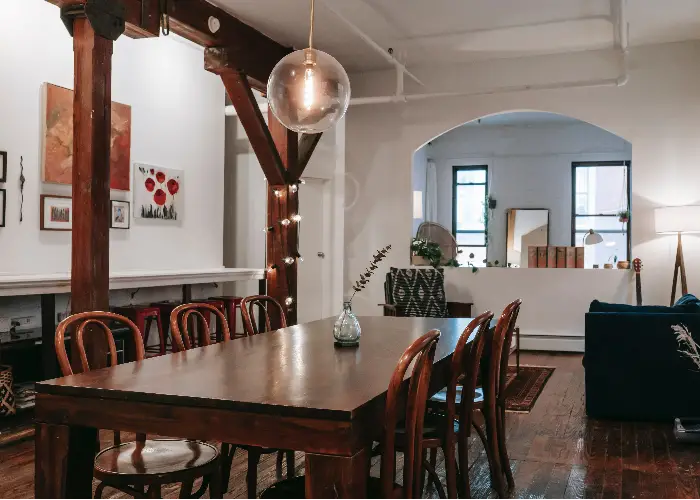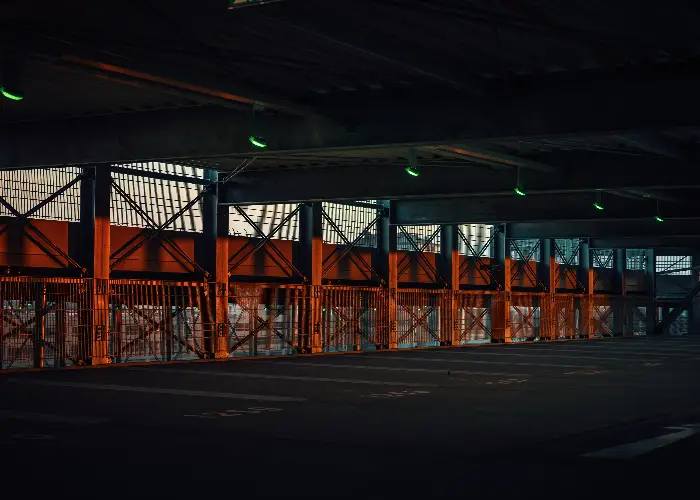Introduction: Inside Beams and Feng Shui
Welcome to the world of Feng Shui, where the energy of our surroundings can greatly impact our daily lives. Have you ever walked into a space and felt an instantaneous sense of calmness or a surge of positive energy? That’s the power of Feng Shui at play! In this blog post, we are going to dive deep into a specific element that often sparks curiosity and concern among Feng Shui enthusiasts – inside beams.
Imagine this: You walk into your dream home, excitedly envisioning how every room will look once it’s decorated to perfection. But as you explore further, your eyes land on those prominent inside beams stretching across the ceilings. Suddenly, doubts start creeping in: Will these be a hindrance to achieving good Feng Shui? Are all inside beams considered bad luck?
Today, we’re here to debunk some common myths surrounding inside beams in order to help you create a harmonious and energetically balanced living space. Whether you’re renovating your current home or searching for a new sanctuary, understanding the role of inside beams in Feng Shui is crucial for harnessing positive energy and creating an environment that supports your well-being.
Ready to delve deeper into this intriguing topic? Let’s unravel the truth behind these architectural features and discover how they can coexist harmoniously with the principles of Feng Shui. By the end of this blog post, you’ll have gained valuable insights on not only embracing inside beams but also enhancing their energy within your living spaces.
So let’s embark on this enlightening journey together as we unlock the secrets behind inside beams in Feng Shui. Get ready to transform your perception and embrace these structural elements from an entirely new perspective!

Understanding the Impact of Inside Beams
To understand the impact of inside beams on Feng Shui, it’s essential to delve into their significance and how they can affect the energy flow within your space. These structural elements, often found in older or traditional homes, have both positive and negative implications when it comes to creating harmonious surroundings.
Inside beams can act as architectural features that add character and charm to a space. They create a sense of structure and stability, anchoring the energy within a room. Furthermore, they serve as visual focal points that draw attention upward and give a sense of grandeur to the overall design.
On the flip side, inside beams might pose some challenges when it comes to optimizing Feng Shui principles. The horizontal nature of these beams can disrupt the smooth flow of energy throughout a room, potentially creating stagnant or blocked areas. This obstruction may lead to feelings of unease or even physical discomfort for those occupying the space.
Understanding how inside beams impact your environment allows you to mitigate any potential negative effects while harnessing their positive attributes. By taking strategic steps in arrangement and decor placement, you can transform inside beam spaces into areas filled with vibrant energy.
In our next section, we will explore different types of inside beams commonly found in interiors. By identifying these variations in construction styles and materials used for inside beams, you’ll be equipped with invaluable knowledge on adapting Feng Shui principles accordingly. Stay tuned for insights that will guide you towards achieving optimal balance while embracing all that these structural elements have to offer!
Different Types of Inside Beams
When it comes to inside beams in Feng Shui, understanding the different types can provide valuable insights into their potential impact on your space. These beams come in various shapes, sizes, and materials, each carrying its own energy and characteristics.
Traditional homes often feature wooden inside beams. The natural warmth and grounding qualities of wood make these beams an excellent choice for creating a cozy and inviting atmosphere. However, it’s important to note that the size and placement of wooden beams can influence their energy flow within a room.
For those with more modern or industrial spaces, metal inside beams might be a common sight. Metal beams offer a sleek and contemporary aesthetic while providing a sense of strength and durability. When incorporating metal beams into your design, careful attention must be given to balance their coolness with elements that bring warmth and softness.
Concrete or exposed brick inside beams are prevalent in converted lofts or industrial-style homes. These robust structural elements exude raw character while serving as striking focal points. When working with concrete or brick beams, it is crucial to create visual harmony by balancing their rough textures with softer elements such as textiles or plants.
By having knowledge of the different types of inside beams commonly found in interior spaces, you gain awareness about the unique attributes they bring to your environment. This understanding sets the stage for effectively harmonizing these elements using Feng Shui principles tailored specifically to each beam type.
In our next section, we will explore whether all inside beams are inherently bad for Feng Shui or if there are ways to optimize their energy flow within your home or office spaces. Join us as we debunk myths surrounding inside beam placements and discover how you can transform them into positive contributors towards balanced living environments!

Are All Inside Beams Bad for Feng Shui?
So, are all inside beams bad for Feng Shui? Let’s debunk this common misconception and explore the nuances surrounding their impact on the energy flow within your space. While inside beams can present certain challenges, they are not necessarily negative elements.
The belief that all inside beams bring bad luck or negative energy is a myth. In reality, it’s the position and placement of these beams that determine their influence on Feng Shui. By understanding how to work with them strategically, you can transform potential drawbacks into positive aspects within your living environment.
One crucial factor to consider is whether the beam runs parallel or perpendicular to the main entrance of a room. Ideally, parallel beams can create a sense of stability and support in Feng Shui since they mimic a bridge-like structure that embraces and guides energy flow throughout space.
On the other hand, perpendicular beams pose more challenges as they obstruct the natural flow of energy within a room. However, by using specific remedies such as placing mirrors to deflect or creating visual distractions through strategic furniture arrangement or decorative elements, you can effectively counterbalance any disruptive effects caused by perpendicular inside beams.
It’s important to remember that achieving good Feng Shui involves careful consideration of multiple factors rather than focusing solely on individual elements like inside beams. By harmonizing colors, furniture placement, lighting design, and incorporating elements representing different natural elements according to Feng Shui principles – such as wood for growth or water for calmness – you can enhance positive energy and balance even in spaces with challenging beam placements.
In our next section, we will delve into techniques for enhancing the energy surrounding inside beams using various Feng Shui remedies and practices. So keep reading as we guide you through creating an energetically balanced space with awe-inspiring aesthetics!
Enhancing the Energy of Inside Beams
Enhancing the energy of inside beamsin Feng Shui is all about finding creative solutions to harmonize their presence with the overall flow of positive energy within your space. While inside beams may initially seem like obstacles, they can be transformed into powerful focal points that contribute positively to the energy dynamics.
One effective technique for enhancing the energy of inside beams is through thoughtful lighting design. By strategically placing lighting fixtures such as track lights or spotlights, you can draw attention away from the beams’ structural elements and instead highlight specific areas or objects within the room. This creates an ambiance that directs focus away from any perceived blockages caused by the beams.
Another approach is creatively incorporating decorative elements and natural materials. Decorative curtains, drapes, or indoor plants suspended from above can add vertical appeal and soften the visual impact of inside beams. The organic textures and vibrant greenery not only beautify your space but also infuse it with life force and a sense of tranquility.
Mirrors can serve as powerful tools in Feng Shui to redirect or shift energy flow around inside beams. Placing mirrors strategically on walls adjacent to perpendicular beams helps deflect any disruptive vibrations caused by their obstruction, creating a more balanced energetic environment.
Additionally, utilizing color psychology allows you to influence how specific hues interact with interior structures like inside beams. Choosing light colors for ceilings and supporting columns can visually expand spaces while minimizing their prominence compared to darker tones.
With these creative techniques in hand, you have the power to enhance the vibrancy and balance within spaces containing inside beams. By focusing on amplifying positive energies through lighting design, decorative elements, mirrors, and color choices aligned with Feng Shui principles, you’ll witness firsthand how these once-perceived obstacles transform into magnificent features coexisting harmoniously within your living environment!

Conclusion: Harmonizing Your Space with Inside Beams
In conclusion, inside beams in Feng Shui do not have to be viewed as obstacles but rather as opportunities for enhancing the energy and aesthetic of your space. By understanding the impact of inside beams, exploring different types, debunking myths about their negative connotations, and implementing proper techniques to harmonize their presence, you can create a balanced and energetically vibrant environment.
Remember that Feng Shui is a holistic approach to creating harmony within our surroundings. While inside beams may present certain challenges in terms of energy flow, they can be mitigated through strategic placement of lighting fixtures, incorporating decorative elements and natural materials, utilizing mirrors for redirection of energy, and choosing appropriate colors.
By integrating these techniques into your interior design strategy, you can optimize the positive aspects of inside beams while minimizing any potential disruptions they may cause. Embrace their structural uniqueness as an opportunity for creativity and visual interest within your space.
Now it’s time for you to apply these insights to enhance your living or working environment. Take inspiration from the information shared in this blog post and make conscious choices that align with your desired Feng Shui principles. Whether it’s creating cozy nooks around wooden beams or using innovative lighting solutions with metal ones – find what works best for you.
Unlock the potential of inside beams instead of viewing them as limitations. Embrace balance and positive energy flow throughout all areas influenced by these architectural features. Your space will not only look aesthetically pleasing but also promote a sense of harmony and well-being.
So go ahead! Transform those once-perceived obstacles into elements that contribute positively to your overall Feng Shui experience. Create a space where positive energy thrives and supports your daily life endeavors!
Take action today towards harmonizing your space with inside beams – start manifesting a home or office environment that truly reflects positivity and vitality.

Sign up